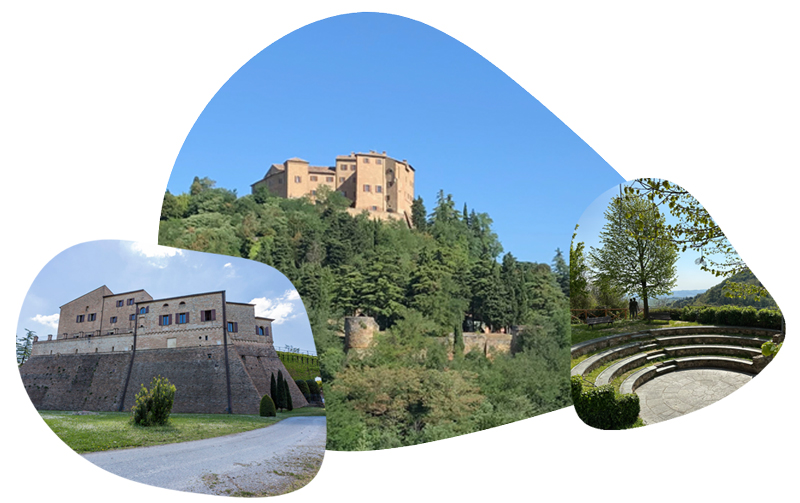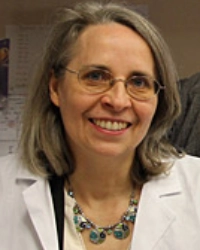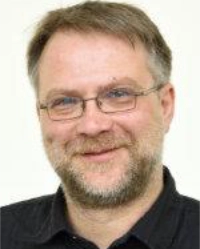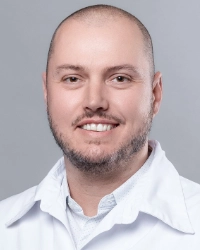European Research Academy on Alzheimer’s Disease
Bertinoro, Italy • 1-5 March 2026

European Research Academy on
Alzheimer’s Disease
Bertinoro, Italy • 1-5 March 2026

European Research Academy on
Alzheimer’s Disease
Bertinoro, Italy • 1-5 March 20265

The European Research Academy on Alzheimer’s Disease aims to provide an overview of the latest developments in the Alzheimer's Disease research field. The event is especially targeted at ambitious early career dementia scientists working in the Netherlands, France, Germany, or Switzerland. Over the course of 4 days the participants will hear a collection of talks by prominent Alzheimer's Disease scientists, combined with daily professional development sessions. In these sessions, the speakers, committee members, and staff will train the participants in skills such as successful grant writing, finding their research niche, and academic mentorship.We will end with a scientific discussion together with our keynote speaker prof. Henrik Zetterberg on the current state of Alzheimer's Disease fluid biomarker research.
Please note that previous editions of the European Research Academy on Alzheimer’s Disease were organised under the name of the European Alzheimer Academy Workshop (EAAW).
The European Research Academy on Alzheimer’s Disease is organised by Alzheimer Forschung Initiative , Alzheimer Nederland , Fondation Vaincre Alzheimer , and the Synapsis Foundation , which are non-profit organisations from Germany, the Netherlands, France, and Switzerland respectively. These organisations collaborate in various ways to fund scientific and medical research on Alzheimer’s Disease and related dementias.
One of these collaborations is the Common European Grant Cycle, through which Alzheimer Forschung Initiative, Alzheimer Nederland, and Fondation Vaincre Alzheimer have supported dementia research with more than 60 million Euros since 1994, thanks to their many generous donors. This network funds exceptional research, both nationally and in cross border projects. All four organisations are dedicated to helping early career dementia researchers reach their full scientific potential.

For more information about the event, please contact the ERA-AD Coordinator
Coen van Deursen
 Dr. Marie-Christine Chartier-Harlin holds a masters and a PhD (1989) on biological health science from the Université de Lille in Lille, France. She pursued post-doctoral research as a research fellow at Saint Mary's Hospital Medical School in London, United Kingdom. Thereafter, she returned to Lille as an Inserm research scientist (1993) working on the genetics of Alzheimer's disease (AD) and Parkinson's disease (PD). In 2001, she became Inserm research director, pursuing work on AD and PD, and, since 2005, she has devoted her attention to studying the molecular mechanisms of PD. This research combines clinical study, genetic epidemiology and molecular genetics approaches, including translation or gene expression studies in biosamples, as well as PD pre-clinical models and investigation of potential PD biomarkers. She is mostly focussing her research on alpha-synuclein and mostly on Leucine-rich repeat kinase 2 (LRRK2), two main genetic determinants of PD. There is an urgent need for the discovery of new therapeutic targets to more effectively combat PD and LRRK2 has emerged in recent decades as a key therapeutic target. This work is performed at the research center of excellence Lille Neuroscience and Cognition, in collaboration with members of several networks including the GEOPD networks and Michael J. Fox Lrrk2 Consortium.
Dr. Marie-Christine Chartier-Harlin holds a masters and a PhD (1989) on biological health science from the Université de Lille in Lille, France. She pursued post-doctoral research as a research fellow at Saint Mary's Hospital Medical School in London, United Kingdom. Thereafter, she returned to Lille as an Inserm research scientist (1993) working on the genetics of Alzheimer's disease (AD) and Parkinson's disease (PD). In 2001, she became Inserm research director, pursuing work on AD and PD, and, since 2005, she has devoted her attention to studying the molecular mechanisms of PD. This research combines clinical study, genetic epidemiology and molecular genetics approaches, including translation or gene expression studies in biosamples, as well as PD pre-clinical models and investigation of potential PD biomarkers. She is mostly focussing her research on alpha-synuclein and mostly on Leucine-rich repeat kinase 2 (LRRK2), two main genetic determinants of PD. There is an urgent need for the discovery of new therapeutic targets to more effectively combat PD and LRRK2 has emerged in recent decades as a key therapeutic target. This work is performed at the research center of excellence Lille Neuroscience and Cognition, in collaboration with members of several networks including the GEOPD networks and Michael J. Fox Lrrk2 Consortium.
 Dr. Marie-Christine Chartier-Harlin holds a masters and a PhD (1989) on biological health science from the Université de Lille in Lille, France. She pursued post-doctoral research as a research fellow at Saint Mary's Hospital Medical School in London, United Kingdom. Thereafter, she returned to Lille as an Inserm research scientist (1993) working on the genetics of Alzheimer's disease (AD) and Parkinson's disease (PD). In 2001, she became Inserm research director, pursuing work on AD and PD, and, since 2005, she has devoted her attention to studying the molecular mechanisms of PD. This research combines clinical study, genetic epidemiology and molecular genetics approaches, including translation or gene expression studies in biosamples, as well as PD pre-clinical models and investigation of potential PD biomarkers. She is mostly focussing her research on alpha-synuclein and mostly on Leucine-rich repeat kinase 2 (LRRK2), two main genetic determinants of PD. There is an urgent need for the discovery of new therapeutic targets to more effectively combat PD and LRRK2 has emerged in recent decades as a key therapeutic target. This work is performed at the research center of excellence Lille Neuroscience and Cognition, in collaboration with members of several networks including the GEOPD networks and Michael J. Fox Lrrk2 Consortium.
Dr. Marie-Christine Chartier-Harlin holds a masters and a PhD (1989) on biological health science from the Université de Lille in Lille, France. She pursued post-doctoral research as a research fellow at Saint Mary's Hospital Medical School in London, United Kingdom. Thereafter, she returned to Lille as an Inserm research scientist (1993) working on the genetics of Alzheimer's disease (AD) and Parkinson's disease (PD). In 2001, she became Inserm research director, pursuing work on AD and PD, and, since 2005, she has devoted her attention to studying the molecular mechanisms of PD. This research combines clinical study, genetic epidemiology and molecular genetics approaches, including translation or gene expression studies in biosamples, as well as PD pre-clinical models and investigation of potential PD biomarkers. She is mostly focussing her research on alpha-synuclein and mostly on Leucine-rich repeat kinase 2 (LRRK2), two main genetic determinants of PD. There is an urgent need for the discovery of new therapeutic targets to more effectively combat PD and LRRK2 has emerged in recent decades as a key therapeutic target. This work is performed at the research center of excellence Lille Neuroscience and Cognition, in collaboration with members of several networks including the GEOPD networks and Michael J. Fox Lrrk2 Consortium.
 Paul Lucassen studied Biomedical Sciences in Amsterdam and obtained his PhD (cum laude) in 1996 with Prof. Dr. D.F. Swaab. After a postdoc with Prof. Dr. E.R. De Kloet in Leiden, he worked with Prof. Dr. M. Joels at the University of Amsterdam. There, he became full professor in 2011, starting his Brain Plasticity Group at the Swammerdam Institute (SILS).
Paul Lucassen studied Biomedical Sciences in Amsterdam and obtained his PhD (cum laude) in 1996 with Prof. Dr. D.F. Swaab. After a postdoc with Prof. Dr. E.R. De Kloet in Leiden, he worked with Prof. Dr. M. Joels at the University of Amsterdam. There, he became full professor in 2011, starting his Brain Plasticity Group at the Swammerdam Institute (SILS).
His research focuses on brain plasticity in relation to (early life) stress, nutrition, exercise, enrichment, cognition and diseases, like depression, head injury and dementia.
He co-founded several consortia, delivered >250 talks and teaches in various ba/ma programs. He is on various editorial boards, is ECNP fellow and past chair of the SAB of Alzheimer Nederland and the Campaign Team Huntington. Paul (co)authored >250 papers, >32 book chapters, his H-factor is; 71 (WoS)/90 (GS).
His group is supported by various (inter)national grants, e.g. from ZonMw/NWO, EU, and Alzheimer Nederland. He is co-recipient of the Urban Mental Health grant, co-lead in ME/CVS and dementia consortia and co-recipient of a Gravitation grant (iCNS).
 Paul Lucassen studied Biomedical Sciences in Amsterdam and obtained his PhD (cum laude) in 1996 with Prof. Dr. D.F. Swaab. After a postdoc with Prof. Dr. E.R. De Kloet in Leiden, he worked with Prof. Dr. M. Joels at the University of Amsterdam. There, he became full professor in 2011, starting his Brain Plasticity Group at the Swammerdam Institute (SILS).
Paul Lucassen studied Biomedical Sciences in Amsterdam and obtained his PhD (cum laude) in 1996 with Prof. Dr. D.F. Swaab. After a postdoc with Prof. Dr. E.R. De Kloet in Leiden, he worked with Prof. Dr. M. Joels at the University of Amsterdam. There, he became full professor in 2011, starting his Brain Plasticity Group at the Swammerdam Institute (SILS).
His research focuses on brain plasticity in relation to (early life) stress, nutrition, exercise, enrichment, cognition and diseases, like depression, head injury and dementia.
He co-founded several consortia, delivered >250 talks and teaches in various ba/ma programs. He is on various editorial boards, is ECNP fellow and past chair of the SAB of Alzheimer Nederland and the Campaign Team Huntington. Paul (co)authored >250 papers, >32 book chapters, his H-factor is; 71 (WoS)/90 (GS).
His group is supported by various (inter)national grants, e.g. from ZonMw/NWO, EU, and Alzheimer Nederland. He is co-recipient of the Urban Mental Health grant, co-lead in ME/CVS and dementia consortia and co-recipient of a Gravitation grant (iCNS).
 Prof. Markus Morawski is an experimental neuroscientist, cellular biologist, and an expert on neuronal extracellular matrix (ECM) and microscopical brain imaging. He pioneered the ion beam microscopy-based immuno-µPiXE technique for ex vivo quantitative cellular element mapping in rodent and human brain tissue and applied this method to understand mechanisms of iron-induced neurodegeneration in Alzheimer’s and Parkinson’s Disease. In cooperation with the MPI-CBS, his group substantially contributed to the understanding of cellular underpinning of MRI contrast by combining quantitative MRI with multimodal advanced histological assessment of post mortem human brain tissue.
Prof. Markus Morawski is an experimental neuroscientist, cellular biologist, and an expert on neuronal extracellular matrix (ECM) and microscopical brain imaging. He pioneered the ion beam microscopy-based immuno-µPiXE technique for ex vivo quantitative cellular element mapping in rodent and human brain tissue and applied this method to understand mechanisms of iron-induced neurodegeneration in Alzheimer’s and Parkinson’s Disease. In cooperation with the MPI-CBS, his group substantially contributed to the understanding of cellular underpinning of MRI contrast by combining quantitative MRI with multimodal advanced histological assessment of post mortem human brain tissue.
Markus established a cutting-edge imaging facility at Paul Flechsig Institute – Centre of Neuropathology and Brain Research at the University of Leipzig, where he currently works on models of neuroprotection in neurodegenerative disease and large scale and 3D microscopy of the human brain to understand the principles that underlie neuronal interactions. His group leans in the rapidly emerging field of research on the role of the extracellular matrix in the central nervous system (CNS) degeneration, regeneration, plasticity and inflammation/infection. They demonstrated important experimental manipulations, which deliver direct insight into the significance of the ECM for these cornerstones of the physiological and pathophysiological brain function. This approach is carried out in an interdisciplinary and collaborative fashion with a variety of different methods ranging from molecular and biochemical analysis over electrophysiological recordings to high-end ex and in vivo imaging techniques.
 Prof. Markus Morawski is an experimental neuroscientist, cellular biologist, and an expert on neuronal extracellular matrix (ECM) and microscopical brain imaging. He pioneered the ion beam microscopy-based immuno-µPiXE technique for ex vivo quantitative cellular element mapping in rodent and human brain tissue and applied this method to understand mechanisms of iron-induced neurodegeneration in Alzheimer’s and Parkinson’s Disease. In cooperation with the MPI-CBS, his group substantially contributed to the understanding of cellular underpinning of MRI contrast by combining quantitative MRI with multimodal advanced histological assessment of post mortem human brain tissue.
Prof. Markus Morawski is an experimental neuroscientist, cellular biologist, and an expert on neuronal extracellular matrix (ECM) and microscopical brain imaging. He pioneered the ion beam microscopy-based immuno-µPiXE technique for ex vivo quantitative cellular element mapping in rodent and human brain tissue and applied this method to understand mechanisms of iron-induced neurodegeneration in Alzheimer’s and Parkinson’s Disease. In cooperation with the MPI-CBS, his group substantially contributed to the understanding of cellular underpinning of MRI contrast by combining quantitative MRI with multimodal advanced histological assessment of post mortem human brain tissue.
Markus established a cutting-edge imaging facility at Paul Flechsig Institute – Centre of Neuropathology and Brain Research at the University of Leipzig, where he currently works on models of neuroprotection in neurodegenerative disease and large scale and 3D microscopy of the human brain to understand the principles that underlie neuronal interactions. His group leans in the rapidly emerging field of research on the role of the extracellular matrix in the central nervous system (CNS) degeneration, regeneration, plasticity and inflammation/infection. They demonstrated important experimental manipulations, which deliver direct insight into the significance of the ECM for these cornerstones of the physiological and pathophysiological brain function. This approach is carried out in an interdisciplinary and collaborative fashion with a variety of different methods ranging from molecular and biochemical analysis over electrophysiological recordings to high-end ex and in vivo imaging techniques.
 Dr. Aurélien Lathuilière, MD-PhD, is a clinician-scientist neurologist and Privat Docent at the University of Geneva, where he leads an independent research group. After medical and doctoral training in Geneva and Lausanne, he completed a clinical and research fellowship at Massachusetts General Hospital and Harvard Medical School, specializing in dementia and neurodegenerative disorders.
Dr. Aurélien Lathuilière, MD-PhD, is a clinician-scientist neurologist and Privat Docent at the University of Geneva, where he leads an independent research group. After medical and doctoral training in Geneva and Lausanne, he completed a clinical and research fellowship at Massachusetts General Hospital and Harvard Medical School, specializing in dementia and neurodegenerative disorders.
His research bridges molecular mechanisms of Alzheimer’s disease with clinical translation. He pioneered encapsulated cell technology (ECT) for sustained antibody delivery, demonstrating proof-of-concept efficacy in preclinical models of anti-amyloid immunotherapy. The platform is now undergoing first-in-human evaluation in oncology. In parallel, his laboratory focuses on tau biology, with contributions on tau propagation, receptor-mediated uptake, and the identification novel tau receptors. His current projects study the cellular interactions between tau and ApoE.
 Dr. Aurélien Lathuilière, MD-PhD, is a clinician-scientist neurologist and Privat Docent at the University of Geneva, where he leads an independent research group. After medical and doctoral training in Geneva and Lausanne, he completed a clinical and research fellowship at Massachusetts General Hospital and Harvard Medical School, specializing in dementia and neurodegenerative disorders.
Dr. Aurélien Lathuilière, MD-PhD, is a clinician-scientist neurologist and Privat Docent at the University of Geneva, where he leads an independent research group. After medical and doctoral training in Geneva and Lausanne, he completed a clinical and research fellowship at Massachusetts General Hospital and Harvard Medical School, specializing in dementia and neurodegenerative disorders.
His research bridges molecular mechanisms of Alzheimer’s disease with clinical translation. He pioneered encapsulated cell technology (ECT) for sustained antibody delivery, demonstrating proof-of-concept efficacy in preclinical models of anti-amyloid immunotherapy. The platform is now undergoing first-in-human evaluation in oncology. In parallel, his laboratory focuses on tau biology, with contributions on tau propagation, receptor-mediated uptake, and the identification novel tau receptors. His current projects study the cellular interactions between tau and ApoE.